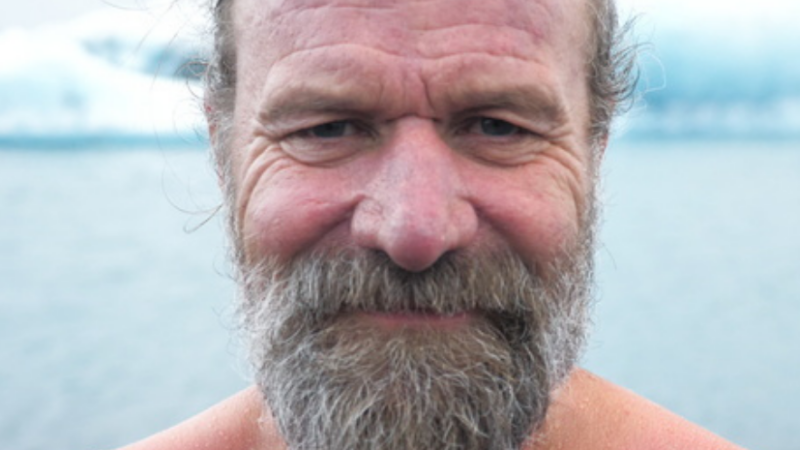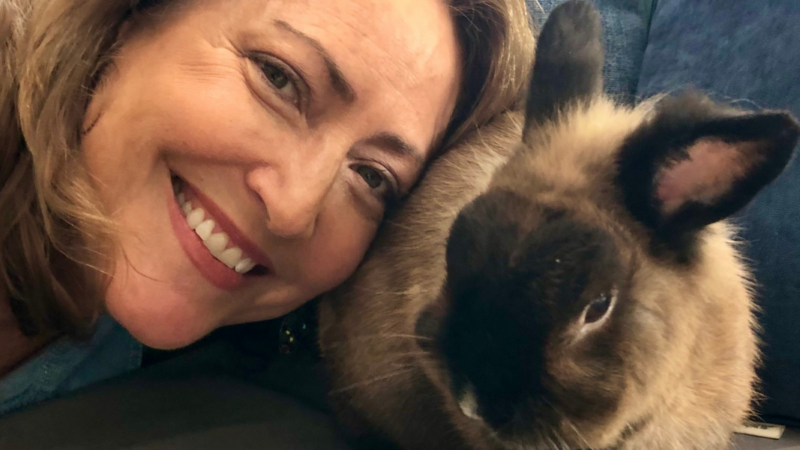-
E117: The Real Work: Letting Go from Within
Michael Singer — October 2, 2025
True spirituality isn’t about mystical experiences or lofty ideals—it’s about honestly facing...
-
Once More: Reflections on Reincarnation and the Gap Between Lives
Tami Simon — September 26, 2025
In this special reflection episode of Insights at the Edge host Tami Simon looks back on her...
-
Honey Tasting Meditation: Build Your Relationship with Sweetness
There is a saying that goes “hurt people hurt people.” I believe this to be true. We have been...
Written by:
Amy Burtaine, Michelle Cassandra Johnson
-
Many Voices, One Journey
The Sounds True Blog
Insights, reflections, and practices from Sounds True teachers, authors, staff, and more. Have a look—to find some inspiration and wisdom for uplifting your day.
Standing Together, and Stepping Up
Written By:
Tami Simon -
The Michael Singer Podcast
Your Highest Intention: Self-Realization
Michael Singer discusses intention—"perhaps the deepest thing we can talk about"—and the path to self-realization.
This Week:
E116: Doing the Best You Can: The Path to Liberation -
Many Voices, One Journey
The Sounds True Blog
Insights, reflections, and practices from Sounds True teachers, authors, staff, and more. Have a look—to find some inspiration and wisdom for uplifting your day.
Take Your Inner Child on Playdates
Written By:
Megan Sherer
600 Podcasts and Counting...
Subscribe to Insights at the Edge to hear all of Tami's interviews (transcripts available, too!), featuring Eckhart Tolle, Caroline Myss, Tara Brach, Jack Kornfield, Adyashanti, and many more.
Most Recent
Wim Hof: The Cold as a Noble Force
Wim Hof is an athlete and extremophile daredevil nicknamed “The Iceman” for his feats of withstanding extreme weather conditions. The holder of more than 20 Guinness World Records, Wim attributes his endurance to specific meditation and breathing techniques. In this intriguing episode of Insights at the Edge, Tami Simon speaks with Wim about the Wim Hof Method of exercises, mindfulness techniques, and cold exposure, and how this regimen can shift our mental perspective as well as physical resilience. Wim describes the ways his practice dovetails with ancient Tibetan Buddhist inner fire meditation and how it alters body chemistry. Finally, Wim describes coldness as a noble force, asserting that by testing our physical limits we also gain a better understanding of the boundless capacities of the human spirit. (72 minutes)
For more information about the Wim Hof Method, please visit wimhofmethod.com.
Meet the Author of . . . Spark Change
The Author
Jennie Lee is the author of Spark Change: 108 Provocative Questions for Spiritual Evolution. In addition to being an author, she is a recognized expert in the fields of yoga therapy and spiritual living. She has taught classical yoga and meditation for more than 20 years, and coached private clients in the practices that integrate life spiritually, mentally, emotionally, and physically. She is also the author of the award-winning books True Yoga: Practicing With the Yoga Sutras for Happiness & Spiritual Fulfillment and Breathing Love: Meditation in Action. She lives in Hawai‘i with her husband and bunnies. For more, see jennieleeyogatherapy.com.
The Book
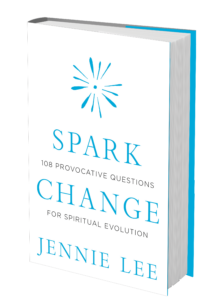 It’s been said that finding the right question is as important as finding its answer. As author Jennie Lee writes, “Quality questions lead to quality answers. Questions promote deeper thought, connection, authenticity, and humility.” In Spark Change, Lee shows you how to identify your most important personal questions and explore how they might redefine the trajectory of your life.
It’s been said that finding the right question is as important as finding its answer. As author Jennie Lee writes, “Quality questions lead to quality answers. Questions promote deeper thought, connection, authenticity, and humility.” In Spark Change, Lee shows you how to identify your most important personal questions and explore how they might redefine the trajectory of your life.
Send us a photo of you and your pet (and let us know if your pet had any role in helping you write your book)!
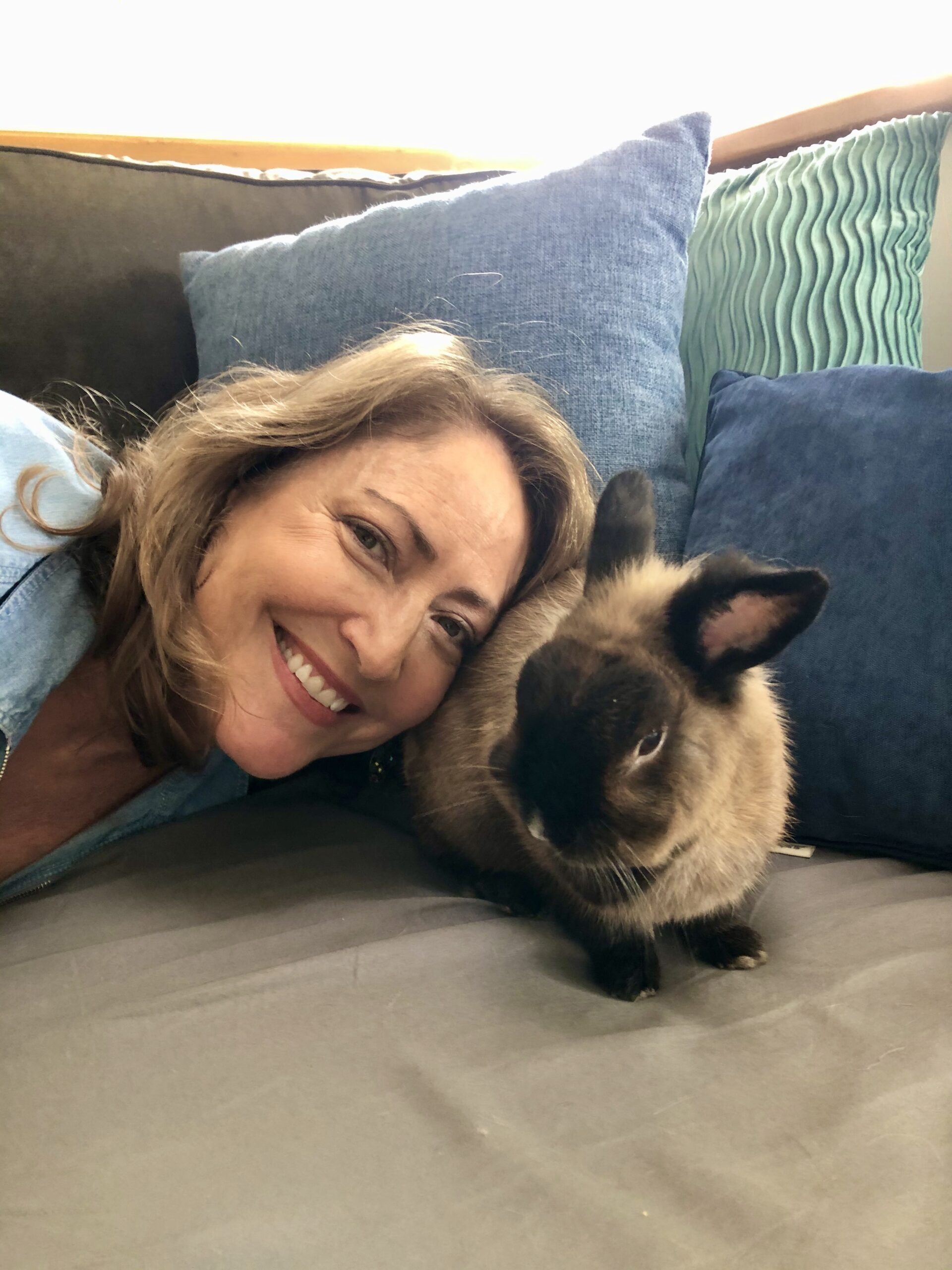
Most evenings I share a little couch time with my house bunny Toki. As prey animals, rabbits sense energy, so if I have had a tense day and carry any agitation into snuggle time, Toki will nip my leg as if to say, “calm down!” Relaxing with the bun reminds me to let go of what I can’t control, and to practice being peaceful in the present moment. Toki time in the evening reinforces what I write about in Spark Change—the necessity of self-reflection and accountability for what needs changing within myself. And he is a darn cute teacher.
What is something about you that doesn’t make it into your author bio? It could be something that impacts your work, or something totally random and entertaining!

Although I grew up in Southern California, I was always a bit afraid of the ocean. When I moved to Hawai‘i, I wanted to get beyond this fear, so I taught myself how to surf. Now, paddling out at dawn into the gorgeous turquoise water is one of the best things about my day. The focus that is required to catch a wave is an apt metaphor for accomplishing anything in life, and the exhilaration that comes when I make the drop and take the ride is pure joy.
What was your favorite book as a child?

As an only child, I played alone a lot. I loved Harold and the Purple Crayon because Harold drew himself into his own adventures, created his own frightening dragons, and saved his own life by imagining a new way home. Imagination is essential to living a creative life and this story illustrates how we craft our experiences through our thoughts. Ever since childhood, I have been learning how to design, with greater intention, the life of my dreams by eliminating dead ends in my thinking and replacing them with new roads home.
Learn More
Sounds True | Amazon | Barnes & Noble | Bookshop | IndieBound
Meet the Author of . . . Every Day Is a Poem
The Author
Jacqueline Suskin has composed over forty thousand poems with her ongoing improvisational writing project, Poem Store. She is the author of six books, including Help in the Dark Season. Her work has been featured in the New York Times, the Atlantic, and Yes! magazine. She lives in Northern California. For more, see jacquelinesuskin.com.
The Book
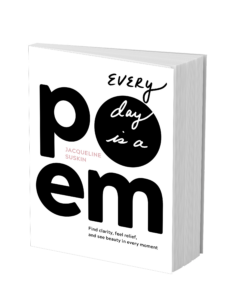
How do we deal with the heaviness of everyday living? When we are surrounded by uncertainty, distrust, and destruction, how do we sift through the chaos and enjoy being alive?
In Every Day Is a Poem, Jacqueline Suskin aims to answer these questions by using poetry as a tool for finding clarity and feeling relief. With provocative questions, writing practices, and mindset exercises, this celebrated poet shows you how to focus your senses, cultivate curiosity, and create your own document of the world’s beauty. Emphasizing that the personal is inextricable from the creative, Suskin offers specific instructions on how to make a map of your past and engage with your pain to write a healing poem.
Show us a day in your life.
I’m currently the Artist in Residence at Folklife Farm, where I spend my days writing, reading, teaching online and working in the garden.
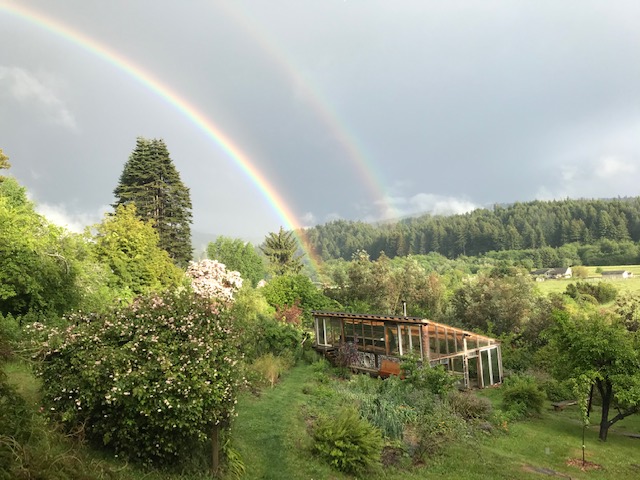
I wake up and take care of my body, dance, stretch, and harvest something for breakfast.
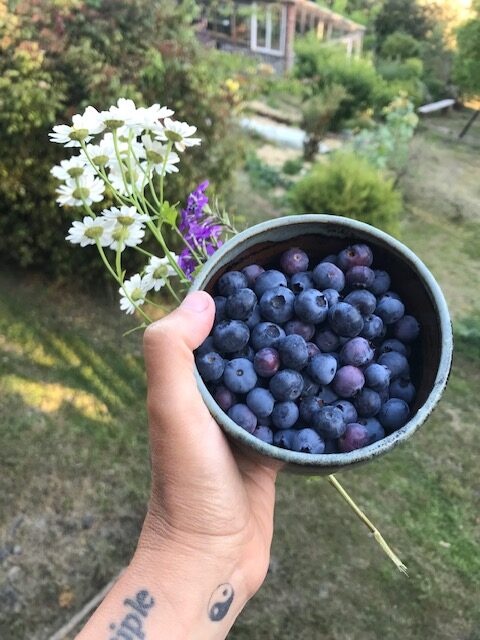
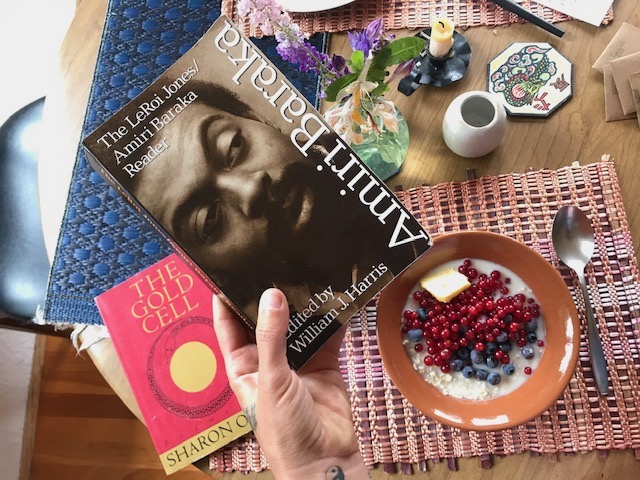
Then I usually work at my desk until late afternoon when I find my way back to the garden for more harvesting and chores.
When I’m working on a book, I’ll wake up around 4 am to write before anyone else is awake. I know that whenever I wake up in the dark with an idea, it’s my job as a poet to turn the light on and write it down.
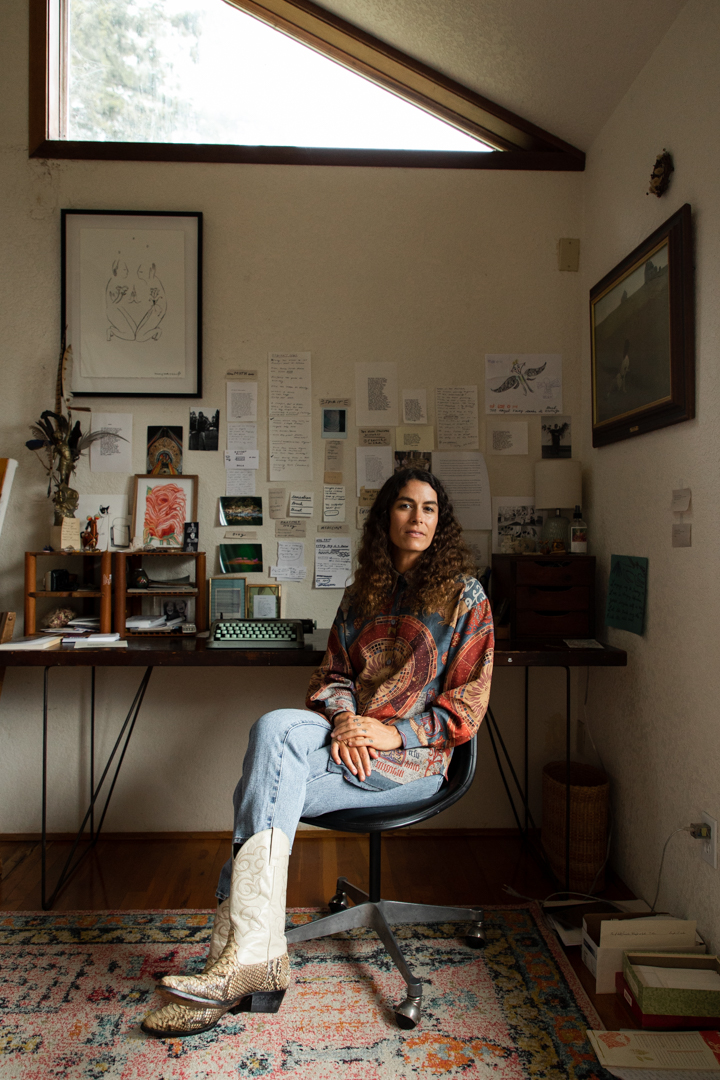
With this schedule, my days are fluid; and although I make showing up at my desk a main priority, I never forget that it’s summer and there are rivers to swim in, flowers to smell, and berries to pick.
Are you learning any new tricks or skills during this time (COVID)? What’s been hardest for you? What do you miss the most? Has your book taken on a new meaning in the world’s current circumstances? Is there anything you would have included in your book if you were writing it now?
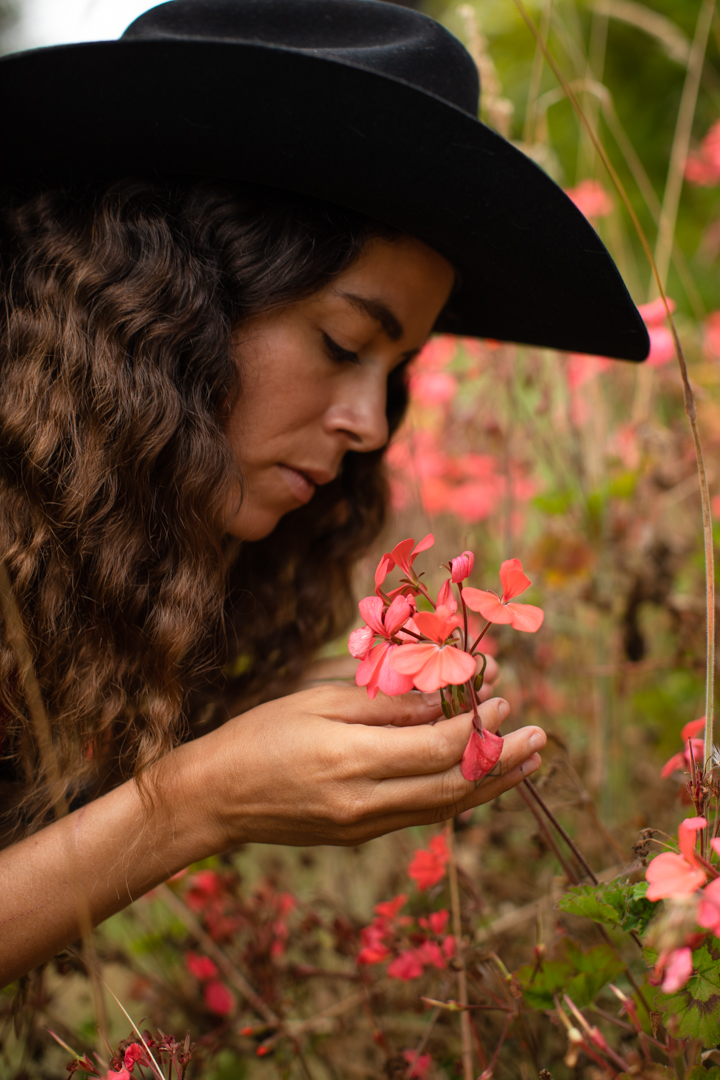
During quarantine, I had to shut down the retreat program I was running at Folk Llife Farm. This was a sad shift, as we had folks signed up to stay for months in advance. Now that I’m not spending my time hosting or interacting with my local community in person, I’m engaging with my online community in a larger capacity. I miss sitting in front of my audience, writing for people after looking them in the eye, and I really miss browsing bookstores. I miss hugging my friends, having teatime and long conversations, and I miss going on tour. But I can’t complain. Poetry has its place in the world now more than ever. I’m here to translate the communal mood, to voice our collective pain, and find the beauty in all of it. My book will help others do this as well. And if there’s one thing COVID has taught me, it’s that we all need an outlet for our emotions, especially when we feel unseen and disconnected. Poetry is this outlet and we can still share it even if we can’t be with one another in person.
What is something about you that doesn’t make it into your author bio?

I’m an ecstatic earth worshiper. Everything I do, every word I write, is attached to the idea that when my readers discover healing through my words, when they transform and become better by way of my work, they’ll in turn treat themselves, each other, and the earth better. This planet is a perfect gift and humans have ruined so much of it. Through my efforts as a poet, I hope to pay tribute to the earth and offer up ways for humans to change their relationship to our one and only home.
Photos of Jacqueline Suskin by James Adam Taylor
Photos around Folklife Farm by Jacqueline Suskin
Learn More

Sounds True | Amazon | Barnes & Noble | Indiebound | Bookshop
Customer Favorites
A Personal Message from Ram Dass and Mirabai Bush

Dying is the most important thing you do in your life. It’s the great frontier for every one of us. And loving is the art of living as a preparation for dying. Allowing ourselves to dissolve into the ocean of love is not just about leaving this body; it is also the route to Oneness and unity with our own inner being, the soul, while we are still here. If you know how to live and to love, you know how to die.
In this book, I talk about what I am learning about death and dying from others and from my getting closer to it. And I talk about what I have learned from being at the bedsides of friends who have died, including how to grieve and how to plan for your own death as a spiritual ceremony. I talk about our fear of death and ways to go beyond that fear so we can be identified with our spiritual selves and live more meaningful lives.
I invited my friend Mirabai Bush into a series of conversations. Mirabai and I share the bond of being together with our guru, Neem Karoli Baba, and over the years, we have taught and traveled and written together. I thought she’d be able to frame the conversations for you, the reader, and also draw in some of what I’ve said in the past about dying, while keeping my current words fresh and immediate. And I wanted to discuss her thoughts on dying as well.
From Mirabai Bush . . .
This is a book about loving and dying and friendship. It is a conversation between old friends, in which we talk about love and death in an intimate setting. I hope we’ve captured Ram Dass’s wisdom, expressed in a new way now that he is 86 and close to death himself.
“It’s about sadhana, spiritual practice, and I want both our voices to be in it,” he said. “I want it to be a conversation.”
“But I need to ask a basic question,” I said.
He nodded.
“Why are we writing this? Who are we writing it for?”
“I want to help readers get rid of their fear of death,” he answered. “So they can be,” a long pause, “identified with their spiritual selves and be ready to die. If you know how to live, you know how to die. This will be a link between my teachings about Maharaj-ji and about death. And people who are living who can see that they are dying each day, that each day is change and dying is the biggest change—it could help them live more meaningful lives.”
After a while, Ram Dass continued, “I’m also thinking about people whose loved one has died, who may live with grief, or guilt and regret, and I’m thinking about those beings who are sitting bedside with the dying . . . this could help them prepare for that role. And people who are dying, who could read this book to help prepare them for dying more consciously, more peacefully, being in the moment.”
Okay, I thought. This will be a good book to write. We’ll be exploring the edge of what we know.
From Ram Dass . . .
I have had aphasia since my stroke 20 years ago. Aphasia impairs a person’s ability to process language but does not affect intelligence. Sometimes I pause for long periods to find a word or figure out how to express a thought in just the right way. I like to say that the stroke gave me the gift of silence.
When I thought about the best way to write a book on dying while having aphasia, I knew it would be important to express these ideas and experiences clearly, subtly, truthfully. I realized that these days I have been expressing what I know best when I am in dialogue with another person—someone who is comfortable with silence and listens for new ideas as they arise. Why not create a book that way?
I like that this format for the book draws you into the room with us, into this conversation that we all need to have. I invite you to watch this video of us talking together, to give you a sense of how our conversations unfolded.
https://youtube.com/watch?v=3Tq7kLnYqIs%3Fautoplay%3D1%26utm_source%3Dbronto%26utm_medium%3Demail%26utm_campaign%3DR180831-Dass-Bush%26utm_content%3DA%2BPersonal%2BMessage%2Bfrom%2BRam%2BDass%2Band%2BMirabai%2BBush
With love,
Ram Dass and Mirabai Bush
The Ultimate Spiritual Guide for Men
Dear Friends,

I’m thrilled to celebrate the release of the 20th Anniversary Edition of my book, The Way of the Superior Man. Two decades after it was first published, The Way of the Superior Man is more relevant than ever. New styles of sexual expression are emerging as old roles for men and women are rapidly dissolving. In this new world, women are taking the lead.
In our new world, a man’s presence—his depth of awareness—is his most valuable asset. A man’s worth can be found in his depth of being. The Way of the Superior Man is the way of cultivating total trust in the reality that is living you right now. However vast it may be, reality is happening now, and it includes you. Feel what is, as it is, without resisting the boundless whole. Feeling all, saying “yes” to the entire now, you will know who you are. You will know yourself as the awake fullness of this entire moment, the very force of being.
The Way of the Superior Man is to realize your true strength by knowing who you are at depth, right now. You learn to feel into awareness fully, so you know yourself as conscious presence. You grow to trust the alive fullness of this moment, appearing spontaneously as you and your experience. Your capacity to embody this profound force of presence in your gaze, breath, and action determines your perceived value, sexually and financially. Your woman and your world long for the authentic power of your awakened heart offered through your whole body.
May your deepest gifts overflow in The Way of the Superior Man.

Rameshwar Das: Love, Loss, and Opening the Spiritual H...
Tami Simon speaks with Rameshwar Das, a writer, photographer, and long-time friend of the spiritual teacher Ram Dass. Rameshwar met his guru Neem Karoli Baba in India in 1970, and most recently was coauthor with Ram Dass on the new book from Sounds True, Polishing the Mirror: How to Live from Your Spiritual Heart. In this episode, Tami speaks with Rameshwar about suffering as a doorway of grace, what it might mean to follow the path of devotion even through hard times and tragedy, the relationship between faith and the recognition of love, and what is meant by “polishing the mirror”—using daily practice to see into the vast and luminous landscape of our true nature. (49 minutes)

